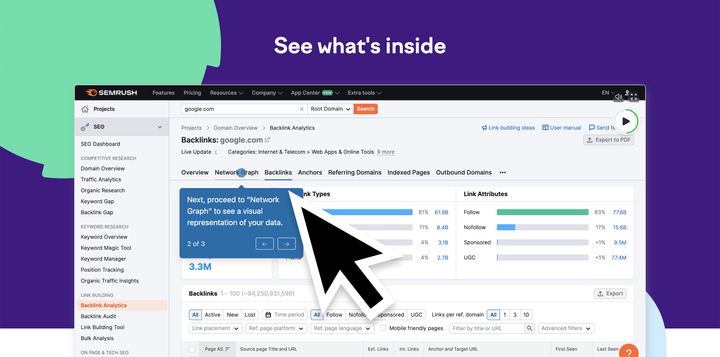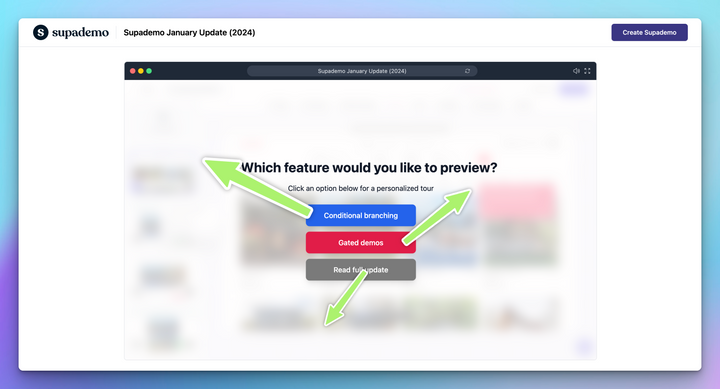Think about this for a second: a new employee staring at a 10-page document, trying to follow complex instructions while the production line moves. Or a seasoned technician missing a critical step because “Step 7” was buried in text. Small moments like these can cost time, money, and quality.
This is especially worth considering in industries like manufacturing, where human errors can lead to a sudden downtime of up to 23%, compared to just 9% in other industries. That’s where visual work instructions come in. Instead of reading paragraphs, it lets your team see exactly what to do through images, annotations, and step-by-step visuals that leave no room for guesswork.
In this guide, you’ll learn what visual work instructions are, how they outperform text-based manuals, and how to create them easily for your team. We’ll also share real examples, best practices, and templates to help you get started.
TL;DR
2. They solve real problems traditional documents can't: Visual instructions eliminate language barriers, speed up employee training, and help capture expert knowledge that would otherwise be lost when experienced workers leave.
3. Creating them is simpler than you think: You can start with screenshots or photos of each step, add annotations to highlight key actions, and organize them into a logical sequence that workers can follow easily.
4. The best visual instructions follow proven patterns: Keep steps short and focused, use consistent formatting, include safety warnings prominently, and test with actual workers before rolling them out.
5. Modern tools like Supademo make creation faster: Instead of manually assembling screenshots and annotations, you can record your process once and automatically generate interactive visual guides that teams can access anywhere.
6. Success comes from matching the format to your needs: Simple tasks work well with photo sequences, complex procedures benefit from video or interactive elements, and safety-critical steps need extra visual emphasis.
What are visual work instructions?
Visual work instructions are digital guides that help employees complete tasks through a hands-on learning approach using images, videos, annotations, and interactive elements instead of long text descriptions. Each step becomes a clear visual reference, showing workers exactly what to do, where to do it, and what the result should look like.
⟡ A photo with arrows pointing to the correct bracket position
⟡ Circles highlighting bolt locations
⟡ A label showing the torque setting
The visual shows the correct result, making it clear what "flush with the top edge" actually means.
These digital guides are accessible on tablets, computers, or mobile devices, so workers can follow them directly at the workstation. They replace paper user manuals and static PDFs that slow teams down, reducing confusion and speeding up completion times.
Visual vs. traditional work instructions: a quick comparison
Knowing the difference both helps you see why visual work instructions are a better option.
The visual format works well because humans process images 60,000 times faster than text.
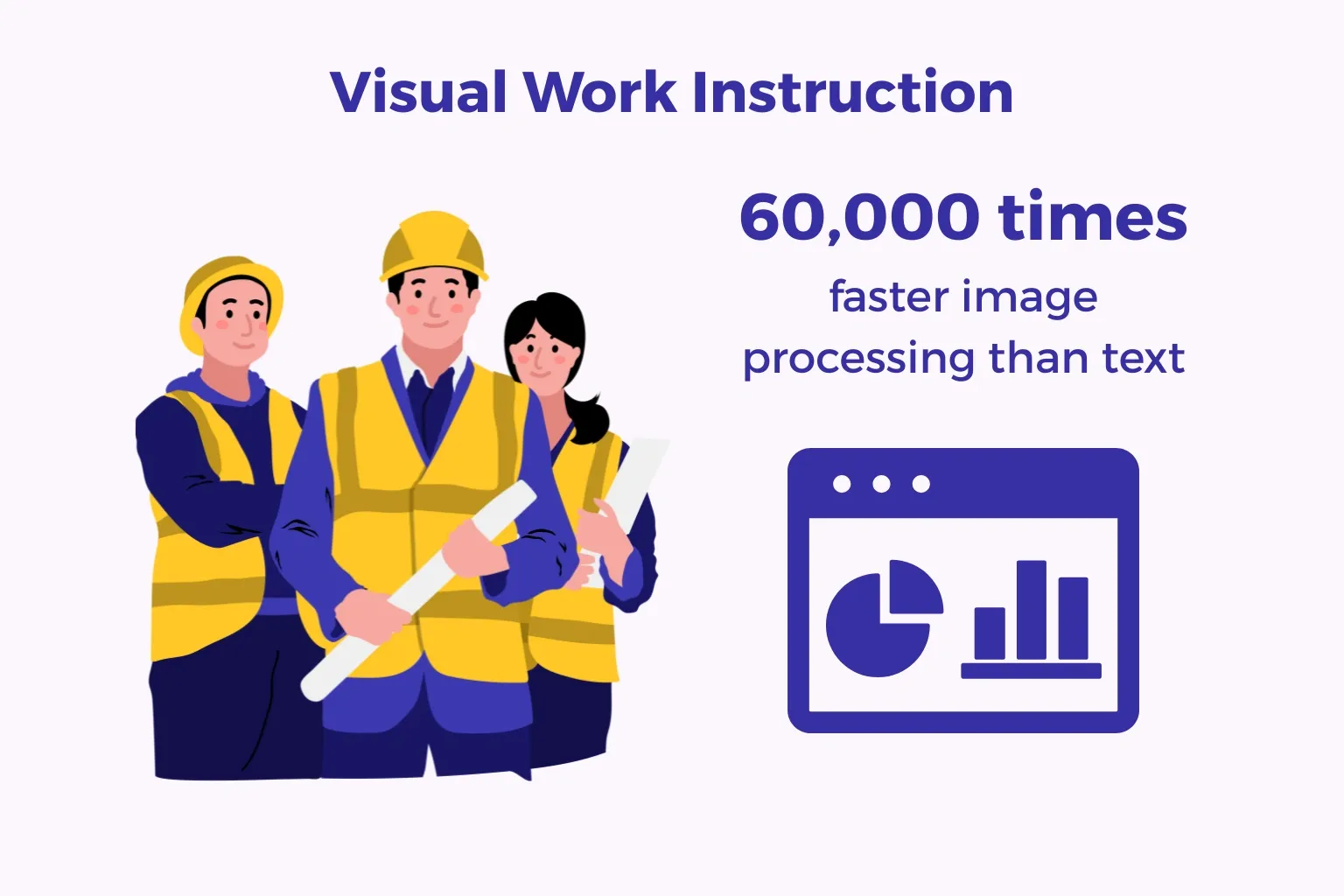
When you show someone where to place a part, they get it immediately. When you describe it in words, they have to translate those words into a mental picture, which takes longer and creates opportunities for mistakes.
Why use visual work instructions?
Visual work instructions solve problems that text-based documentation processes simply can't fix. They improve how quickly people learn, reduce costly mistakes, and help you capture knowledge that would otherwise disappear.
Here's what you get when you switch to visual instructions:
- Faster training and onboarding: New employees learn tasks faster when they can see each step instead of reading about it. Visual instructions reduce the time experienced workers spend training newcomers, getting new hires productive sooner.
- Fewer errors and quality issues: When workers see exactly what the finished step should look like, they catch mistakes before they become defects. Visual guides reduce misinterpretation that leads to rework, scrap, and warranty claims.
- Better knowledge transfer: Experienced workers have techniques that never make it into written documents. Visual instructions let you record an expert performing the task, capturing details that text would miss and preserving that knowledge when people retire or move to other roles.
- No language barriers: Images work for everyone regardless of reading level or native language. A photo of the correct bolt placement communicates clearly to workers who might struggle with technical English descriptions.
- Improved safety compliance: Safety-critical steps stand out better with visual warnings. Instead of reading about electrical hazards, workers see exactly which areas to avoid, reinforcing safe behavior and supporting compliance training.
- Easier updates and version control: When a process changes, you replace the affected images instead of rewriting entire paragraphs. Digital visual instructions update across all devices instantly, so everyone works from the current version.
- Higher engagement and retention: Workers prefer visual instructions because they're easier to follow. Higher engagement means people actually use the instructions instead of guessing, and they remember procedures better when they've seen them demonstrated visually.
How to create effective visual work instructions?
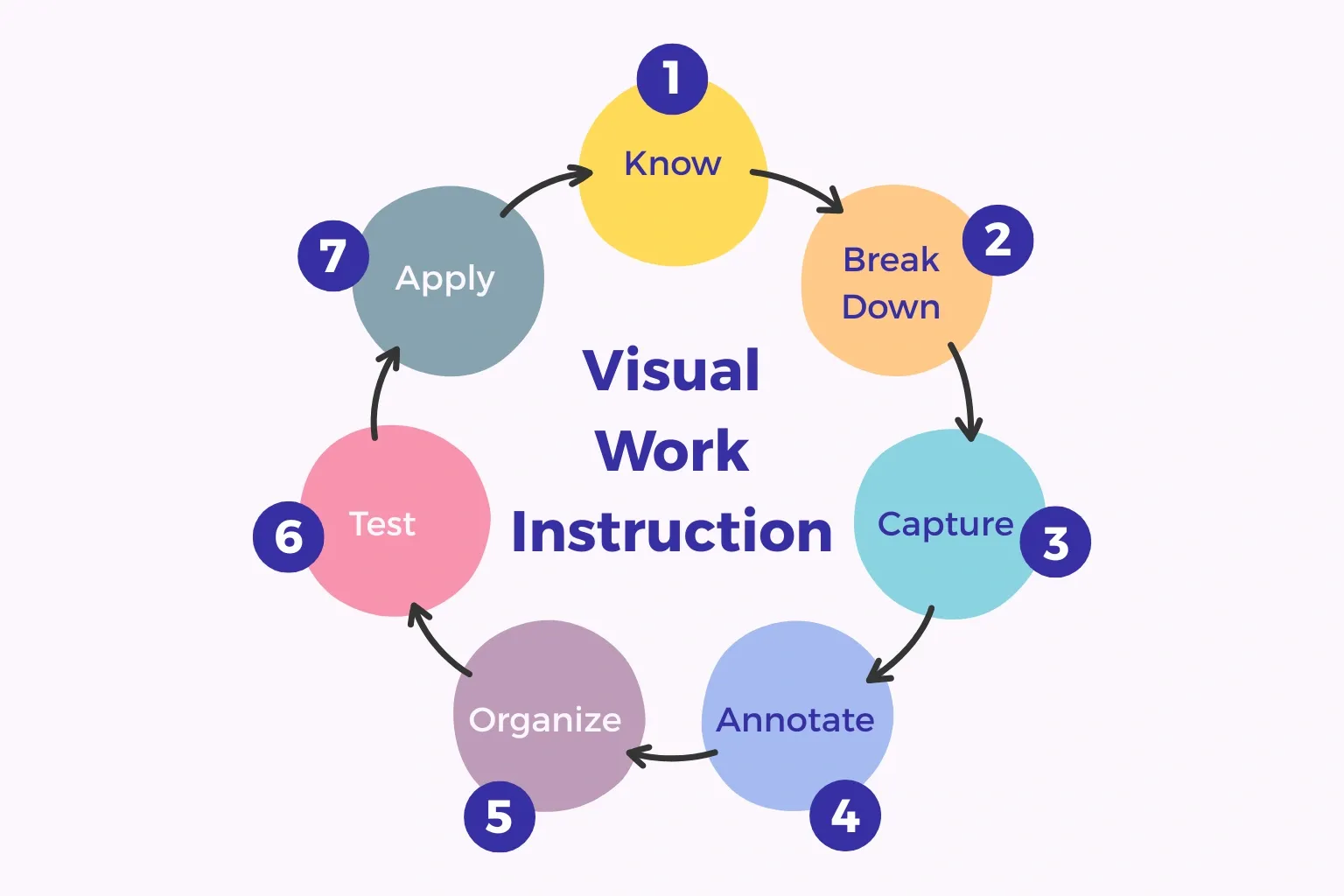
Creating visual work instructions doesn't require expensive equipment or design skills. You need a systematic approach that captures each step clearly and presents it in a way workers can follow easily.
Here's how the process works:
- Know your audience and purpose: Identify who will use these instructions and what they need to accomplish. New employees need more detail than experienced workers, while complex tasks require more granular steps. Address specific challenges like recurring errors, slow task completion, or confusing techniques.
- Break down the procedure into clear steps: Watch an experienced worker perform the task and document every action, decision point, and quality check. Each step should be a single, specific action. If you're using "and" within a step description, split it into two steps.
- Capture high-quality visuals: Take photos or record video of each step being performed correctly using good lighting. For instance, when documenting how to adjust a valve, capture wide shots showing overall equipment location, then close-ups of hand position, the adjustment tool, and the indicator dial.
- Add annotations and highlights: Mark up your images to draw attention to critical elements. Use arrows to show direction of movement, circles to highlight small parts, text callouts for measurements or settings, and color coding for warnings or quality checkpoints. Keep annotations simple and clear.
- Organize steps in a logical sequence: Arrange your visual steps in the order they're performed. Number each step clearly. Group related steps into sections if the procedure is long. For instance, "Preparation" might include steps 1-4, "Assembly" covers steps 5-12, and "Quality Verification" handles steps 13-15.
- Test with real users: Give your draft instructions to someone who doesn't know the procedure and watch them try to follow it. Then, just observe where they hesitate, misunderstand, or make mistakes. Those spots need clearer visuals or additional detail.
- Make them accessible: Put your visual work instructions where workers can access them easily at the point of use. The right distribution method makes the difference between instructions that get used and instructions that get ignored.
Key components and types of visuals
Visual work instructions need specific building blocks to guide workers effectively. Without these key components, even great photos or videos leave workers guessing about what matters most.
The essential components every visual work instruction should have include:
These components create the framework that makes visual instructions easy to apply. Now, once you have the right components in place, you need to choose the visual format that communicates each step most clearly.
Here's how different visual types serve different instruction needs:
The best visual work instructions often combine multiple formats. You might use photos for most steps, add a diagram to show how parts relate spatially, include a short video for a tricky technique, and provide comparison images at quality checkpoints.
Best practices and tips for creating visual work instructions
Following these practices ensures your visual instructions work well and stay useful over time. The difference between instructions that get used and instructions that get ignored often comes down to how well you apply these fundamentals.
Here are the practices that matter most:
- Keep each step focused on one action: If a step requires multiple decisions or hand movements, split it into separate steps. Workers should complete each step before moving to the next without having to remember complex sequences.
- Use consistent formatting throughout: If you circle important parts in red in step 1, use red circles for all important parts in all steps. Consistency helps workers know what to look for without relearning your annotation system each time.
- Place safety warnings prominently: Use distinctive visual markers like red borders, warning symbols, or highlighted backgrounds at the beginning and at relevant steps. Critical safety steps should be impossible to miss.
- Show before and after states: For steps where the change isn't obvious, show the indicator or component before adjustment and after adjustment so workers can verify they've completed the step correctly.
- Include measurements and specifications visually: Instead of writing "ensure 3mm gap," show a photo with the gap marked and a measurement overlay. Workers can match what they see to the reference image.
- Test with varying experience levels: What's obvious to an expert might not be clear to someone new. If three different people misinterpret the same step, the visual needs improvement rather than more explanation.
Visual work instruction examples across industries
Seeing examples helps you understand what works in different contexts and gives you ideas for your own visual instructions.
Manufacturing assembly visual work instruction examples
Circuit board assembly
If you're documenting circuit board assembly, visual work instructions can eliminate confusion about component placement and orientation. This matters because placing a single polarized component incorrectly can destroy the entire board.
Here's how visual instructions can enhance this process:
- Component identification: Photos show each component next to its board location with part numbers visible, so technicians pick the right component every time.
- Placement sequence: Overhead shots at each stage show which components go in which order, preventing assembly mistakes that require rework.
- Orientation verification: Close-up images demonstrate correct polarity for diodes and capacitors with visual markers showing alignment, eliminating the most common assembly error.
- Soldering technique: Photos capture proper iron angle and solder flow appearance so new technicians can match their technique to expert standards.
- Quality checkpoints: The final step includes a reference image of the completed board showing all components properly seated and soldered for visual verification.
Mechanical assembly
If you're creating instructions for gearbox assembly, you face the challenge of showing three-dimensional relationships and proper torque sequences. Text descriptions rarely capture the spatial awareness workers need.
Visual work instructions solve this by showing:
- Parts layout: An initial photo displays all components in assembly order, helping technicians verify they have everything before starting.
- Hand positioning: Images show proper grip and tool angles for each fastening step, teaching ergonomic technique that prevents injuries.
- Assembly sequence: Step-by-step photos reveal which parts attach in which order, preventing the common mistake of installing components in the wrong sequence.
- Torque specifications: Callout boxes on each fastening step specify exact torque values and tightening patterns, ensuring consistent assembly quality.
- Visual verification: Photos at key assembly stages let workers confirm their progress matches the expected state before proceeding.
Quality inspection
If you're training inspectors to evaluate welded joints, subjective terms like "acceptable bead appearance" create inconsistency. Different inspectors interpret quality standards differently without visual references.
Here's how visual instructions standardize quality:
- Reference standards: Photos show examples of acceptable welds from multiple angles so inspectors know exactly what passes inspection.
- Common defects: Images display typical problems like porosity, undercut, and incomplete penetration, with clear indicators of what to look for.
- Measurement points: Annotated photos mark where to measure bead width, height, and penetration with gauges properly positioned.
- Rejection criteria: Side-by-side comparisons show the boundary between acceptable and unacceptable quality, removing subjective judgment.
- Documentation examples: Sample inspection reports with corresponding photos teach inspectors how to document findings consistently.
Healthcare procedure examples
Medical device setup
If you're training nurses on patient monitoring equipment, connection errors can delay care or provide incorrect readings. Text manuals with generic diagrams don't match the specific equipment in your facility.
Visual instructions using photos of your actual equipment can:
- Show exact connection points: Images of your specific monitors with arrows pointing to each port eliminate confusion about which cable goes where.
- Use color coding: Matching colored cables to colored annotations in the photos helps nurses make correct connections even under time pressure.
- Verify setup completeness: A final reference photo shows the fully connected system, so nurses can visually confirm their setup before use.
- Include power-on sequence: Step-by-step images show the correct startup procedure and what each screen should display at each stage.
- Highlight safety checks: Red-bordered callouts emphasize critical verification points like alarm function tests and secure connections.
Medication preparation
If you're documenting sterile compounding procedures in a pharmacy, technique matters as much as the steps themselves. Small deviations can compromise sterility and patient safety.
Here's what visual instructions capture:
- Hand hygiene technique: Photo sequences demonstrate proper scrubbing technique, gloving procedures, and aseptic practices that text descriptions can't convey clearly.
- Work zone setup: Images show the correct placement of supplies within the hood, maintaining sterile fields, and preventing contamination.
- Drawing technique: Close-ups capture needle insertion angles, vial handling, and ampule opening methods that experienced pharmacists perform automatically.
- Visual verification: Photos show what properly mixed solutions should look like, helping staff identify problems before administration.
- Disposal procedures: Images mark contaminated waste streams and demonstrate safe disposal of sharps and hazardous materials.
Visual work instruction templates (free PDF templates)
Templates give you a good starting point so that you don’t have to build the work instructions from scratch.
Each example of work instruction templates given below serves a different purpose. Let’s take a look at them in detail:
1. Standard operating procedure template
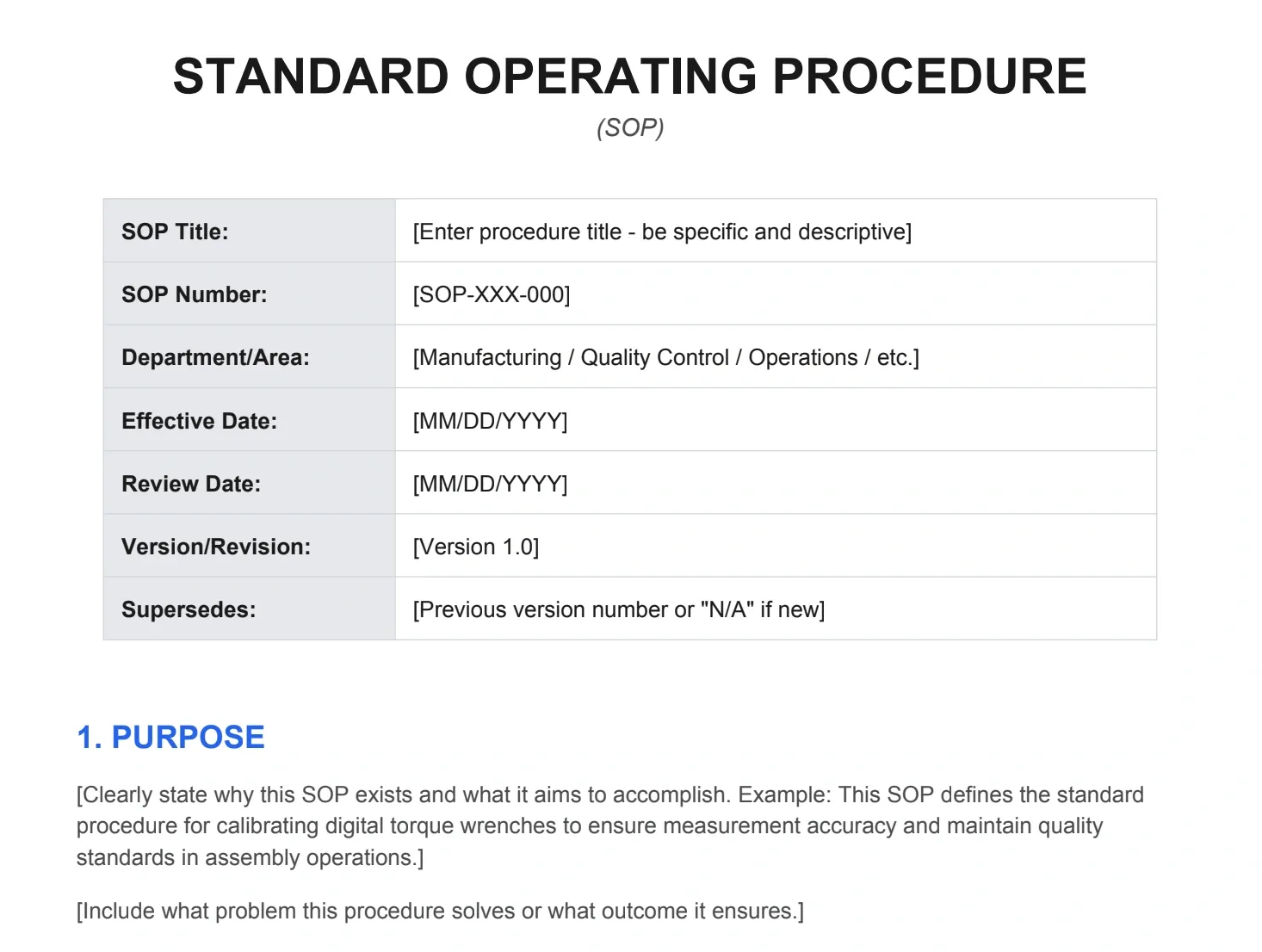
In this sample of a visual SOP template, the header comes with the procedure name and version. Then, there are sections for safety warnings with red borders, numbered steps with image placeholders, a notes section for special considerations, and approval signatures.
2. Assembly instruction template
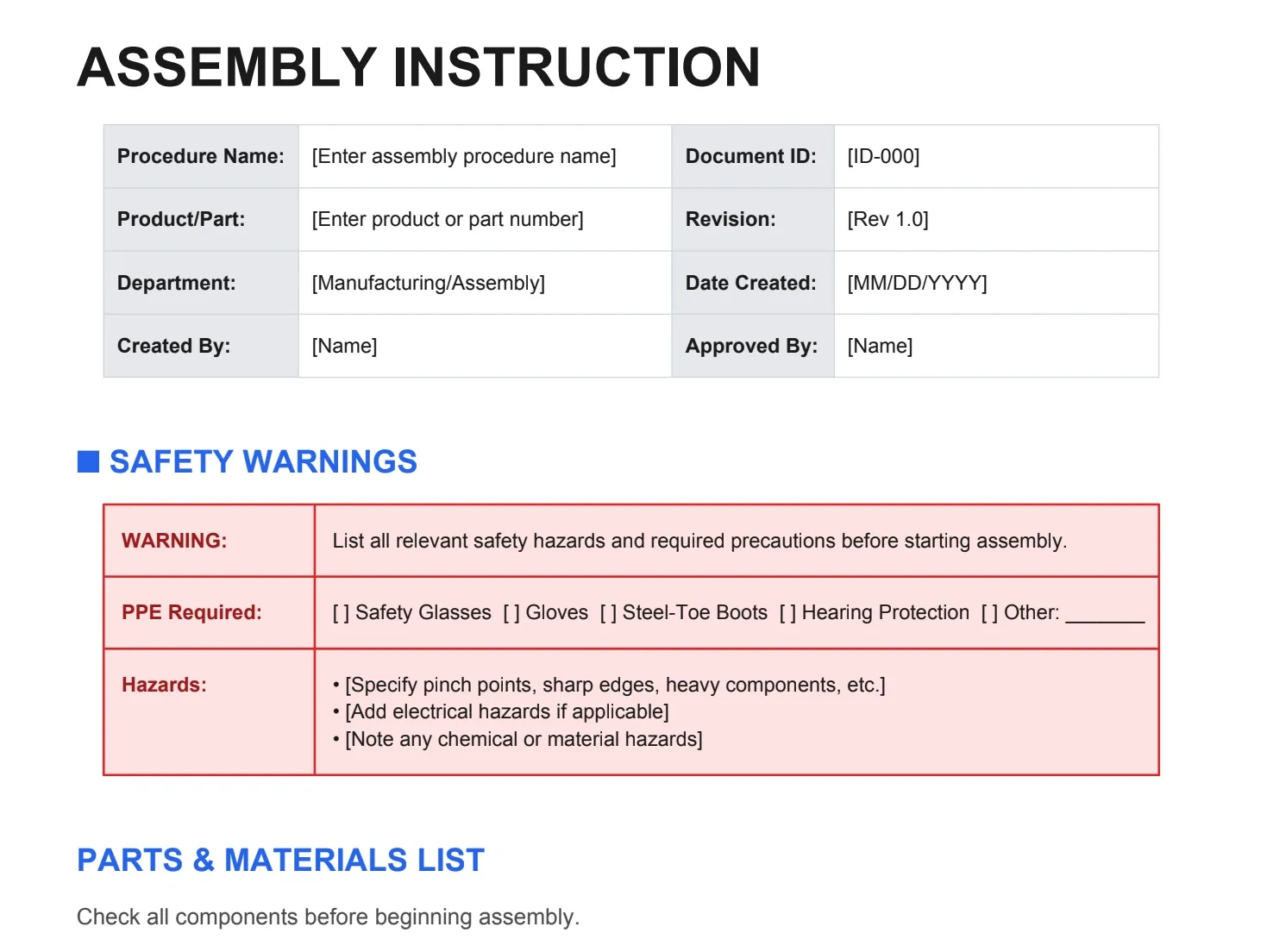
This sample of work instruction template includes parts list with photos of each component, a tools required section with images, step-by-step assembly with before/after photos for each stage, quality checkpoints with reference images, and a problem-solving guide with photos of common issues.
3. Equipment setup template
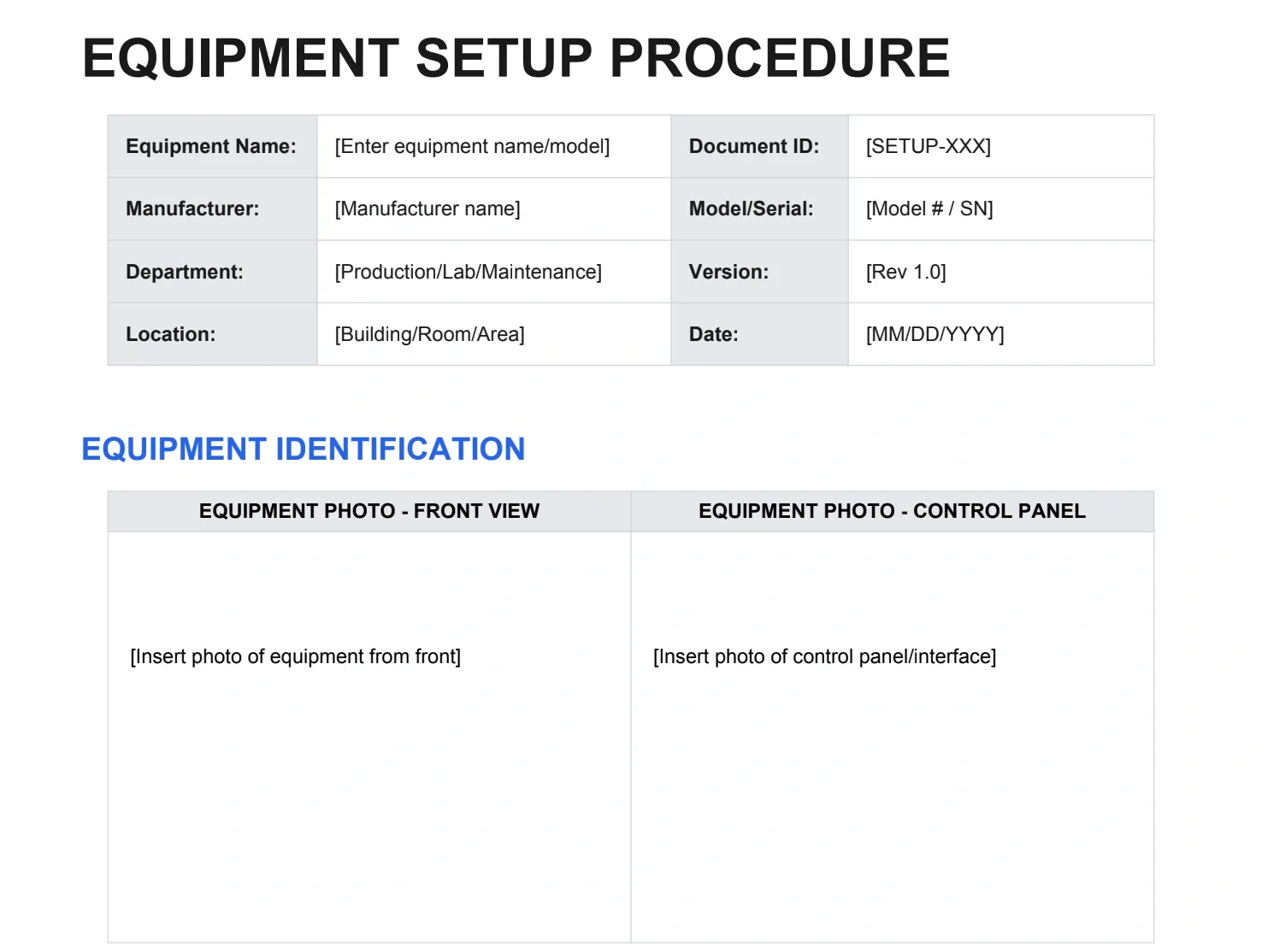
The equipment setup work instruction template includes equipment identification photo, pre-operation safety checks with visual verification points, numbered setup sequence with annotated images, operational test procedures with expected results shown visually, and shutdown/storage procedures.
Challenges visual work instructions solve
Visual work instructions address specific problems that affect traditional documentation.
- Language barriers: Text instructions fail when workers have different native languages or reading levels. Visual instructions communicate through images that transcend language. A photo of the correct bolt placement works for everyone.
- Complex spatial tasks: Describing three-dimensional relationships in text is hard. "Insert tab A into slot B while ensuring clearance with component C" makes sense when you see it, but creates confusion when you read it. Visual instructions show the spatial relationships directly.
- Knowledge capture: Experienced workers have techniques they can demonstrate but struggle to explain in words. Recording them performing the task captures the knowledge visually before they retire or move to other positions.
- Training consistency: Different trainers explain tasks differently. Some include important details that others skip. Visual instructions ensure every new employee gets the same information presented the same way.
- Error-prone steps: Some steps cause repeated mistakes with text instructions. Making those steps visual often eliminates the errors. For instance, connector orientation causes mistakes when described in text but becomes obvious when shown in a photo.
- Quality verification: Text descriptions of acceptable quality are subjective. "Ensure smooth finish" means different things to different people. A reference photo of an acceptable finish creates an objective standard everyone can match.
- Remote support: When equipment fails at a remote location, visual instructions help local staff perform repairs or adjustments that would otherwise require flying in a specialist. Step-by-step photos guide them through unfamiliar procedures.
- Rapid scaling: Opening new production lines or locations requires training many people quickly. Visual instructions scale knowledge transfer without requiring experienced trainers to repeat the same information hundreds of times.
Software and tools for creating visual work instructions
The right software makes creating and maintaining visual work instructions faster and more effective. Different tools serve different needs depending on your industry, complexity level, and how you plan to distribute instructions.
Choosing the right tool depends on what you need to create and how your team will use the instructions.
Here are the leading options for creating visual work instructions:
Most teams start with one tool and expand as needs grow. The key is choosing software that matches your current requirements without forcing you into complex features you won't use.
Accessibility considerations for visual instructions
Creating visual work instructions that everyone can use requires thinking about accessibility from the start. Make your visual work instructions accessible to all team members by considering these factors:
- Provide text alternatives for images: Include descriptive captions or alt text for every image so workers using screen readers can understand the content. For example, "Hand positioned at 45-degree angle gripping torque wrench handle" describes what the image shows.
- Use sufficient color contrast: Ensure annotations, highlights, and text overlays have enough contrast against backgrounds for workers with color vision deficiencies. Avoid relying solely on color to convey critical information.
- Make text readable: Use clear fonts at a minimum 12-point size for any text in your instructions. Avoid decorative fonts that are hard to read. Test readability on the actual devices workers will use.
- Support multiple learning styles: Combine images with brief text descriptions, optional audio narration, and video demonstrations when possible. Different people process information differently.
- Enable adjustable display settings: If using digital instructions, allow workers to zoom images, adjust text size, and change contrast settings to match their needs.
- Test with your actual workforce: Ask team members with different abilities to try using your instructions and identify barriers you might have missed. Their feedback reveals real accessibility issues.
Create interactive visual guides with Supademo
You understand the value of visual work instructions. You've seen examples across industries. Now you need a way to create them without spending weeks on each procedure.
Supademo turns any workflow into an interactive visual guide in minutes. Record your screen or process once, and Supademo automatically generates step-by-step instructions with annotations, highlights, and guidance that teams can follow at their own pace.
Here's what makes Supademo work for teams creating visual work instructions:
- Record in HTML, screenshots, or video: Capture your process exactly as it happens. Supademo creates interactive steps automatically, so you don't manually assemble screenshots or write descriptions.
- Add AI voiceovers and annotations: Enhance your visual guides with synthetic voiceovers in multiple languages. Auto-generate text annotations based on what's happening in each step. Translate into 15+ languages with one click.
- Personalize with branching and variables: Create one visual guide that adapts to different users, departments, or scenarios. Conditional branching lets workers choose their path based on their specific situation.

- Track engagement and completion: See who views your instructions, where they drop off, and which steps cause confusion. Use data to improve your guides continuously.
- Share everywhere your team works: Embed visual instructions in your knowledge base, share as links, trigger in-app tours, or group multiple guides into collections. Teams access them wherever they need them.

Visual work instructions work when people actually use them. Supademo makes work instruction creation fast enough that you'll build them for every process that needs documenting, and makes them interactive enough that workers prefer following them over asking questions.
Get started for free today to see how you can create effective visual guides that improve training, reduce errors, and capture expert knowledge.
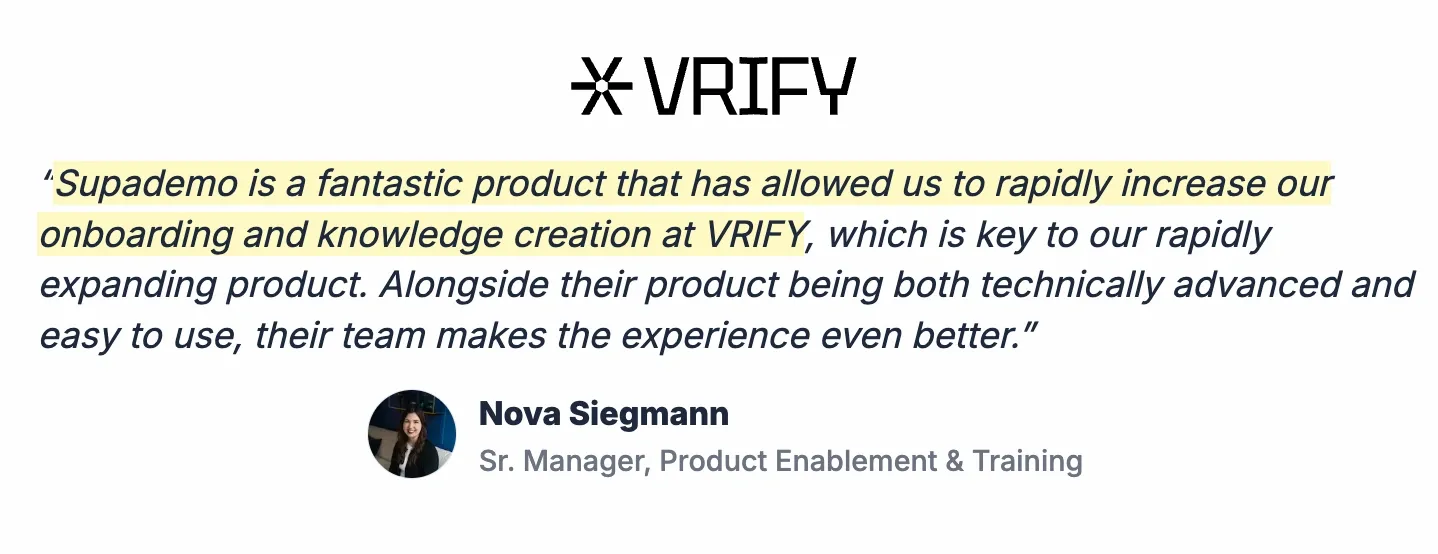
FAQs
What makes a visual work instruction effective?
Effective visual work instructions use clear images for each step, include annotations that highlight critical actions, and present information in a logical sequence that workers can follow easily. Test them with actual users to ensure nothing is confusing or ambiguous.
How many steps should a visual work instruction have?
Keep visual work instructions focused on one complete task, typically 10-20 steps. If a procedure is longer, break it into multiple instruction sets grouped by logical sections like setup, operation, and shutdown to avoid overwhelming workers.
Can visual work instructions replace all written documentation?
Visual instructions work best for procedural tasks where workers need to complete specific steps in sequence. You'll still need written documentation for policies, background information, and conceptual training that doesn't involve step-by-step procedures.
What equipment do you need to create visual work instructions?
Start with a smartphone camera or tablet for photos, basic image editing software for annotations, and a system to organize and distribute the final instructions. Many companies begin with simple tools before investing in specialized software.
How often should visual work instructions be updated?
Update visual work instructions immediately when processes change and review them quarterly, even if nothing changes. Workers can spot outdated steps or suggest improvements based on their experience using the instructions.
Do visual work instructions work for complex technical procedures?
Yes, complex procedures often benefit most from visual instructions because they're harder to describe in text. Break complex tasks into more granular steps and use multiple images or angles to show intricate details clearly.
How do you measure the effectiveness of visual work instructions?
Track metrics like training time for new employees, error rates on specific tasks, time to complete procedures, and worker feedback on clarity. Compare these metrics before and after implementing visual instructions to measure impact.



